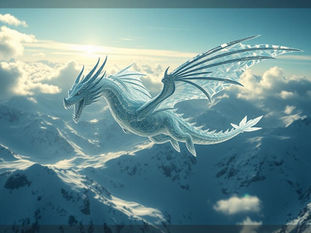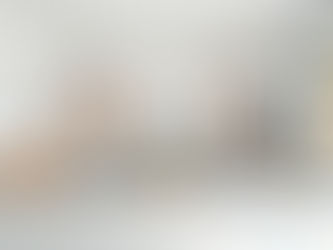
Steps to Create the Same Midjourney Character Every Time
Apr 30
4 min read
0
1
0

Want to make a character appear consistently in your Midjourney images? This is especially helpful if you are creating a series, like illustrations for a children's book. Getting Midjourney to show the same character in different poses or scenes can seem tricky. But there is a method you can use.
This guide walks you through a helpful process for creating consistent characters in Midjourney and then getting them into different looks and situations.
Start With the Right Prompt
Getting your character right from the start is important. When you first ask Midjourney to create your character, the exact words you use matter. One way to help Midjourney understand you want a specific individual, not just a generic type, is to include a descriptive word at the very beginning of your prompt.
For example, instead of just saying "Mouse character multiple poses," try starting with something like "little mouse character multiple poses". This simple change can make a big difference. It helps Midjourney focus on creating one consistent mouse across the generated images in that first grid.
Try starting your prompt with a descriptive word like "little," "happy," "brave," etc., before the character type.
Follow with details about the character's appearance, style (children's book illustration, watercolor), background (flat white), and clothing. Being specific about clothes helps keep the character looking the same.
Phrases like "multiple poses and expressions" help generate a set showing the character in different ways.
Getting More Variations
Sometimes, even with the right prompt, the initial set might show slightly different characters, especially if you don't use that lead descriptive word. Midjourney lets you rerun a prompt from scratch, which can sometimes give you a better, more consistent set on a second try.
Another way to get new ideas based on an image you like is to use the 'V' buttons under the generated grid. Clicking a 'V' button (like V1, V2, V3, V4) tells Midjourney to create variations based on that specific image panel. This can sometimes give you useful new versions of your character, though you might find some strange results mixed in.
To really take control of your Midjourney characters at scale, consider exploring automation tools that streamline the process. The Midjourney Automation Suite by TitanXT can help you manage prompts, generate variations, and keep track of your consistent characters more easily.
Prepare Your Characters for Reuse
Once you have generated character images you like, they are usually small. To use them in larger projects like books, you need to make them bigger without losing quality.
Upscaling the Image
First, use Midjourney's upscale options (U1, U2, U3, U4) on the panel you want to work with. This gives you a single, larger version of that character.
Next, download the upscaled image from Midjourney.
Then, use an external online upscaling tool. Websites like enhance.io (or similar) can enlarge the image further, often up to 4 times the size (e.g., from 1000x1000 to 4000x4000 pixels). Upload your downloaded image to the tool and process it.
After the external upscaler finishes, download the final, high-resolution image.
Cutting Out the Character
Now you need to isolate the character from its background. You will need image editing software for this. Programs like Affinity Designer, Affinity Photo, Photoshop, or even free alternatives can do this. The goal is to cut around the character.
Open the high-resolution image in your editing software.
Use a selection tool (like a selection brush or magic wand) to select the character.
Refine the selection if needed, but for many purposes where the background is plain, a rough selection can work.
Copy the selected character.
Paste the character into a new, transparent document.
Export the cut-out character image. PNG format is good if you need a transparent background, or JPEG if you are placing it on a solid background.
Repeat this for all the character images you want to use.
Generate New Poses and Expressions
The clever part is using your cut-out characters back in Midjourney to get new images of them in different situations or with new expressions. This allows you to create a whole range of images for your character on demand.
Upload your cut-out character images back into Midjourney (in Discord). Send them as messages one by one.
Once uploaded, click on each image and select "Copy Link". Gather the links for the images you want to use as references.
Start a new Midjourney prompt using the `/imagine` command.
Paste the image links at the very beginning of your prompt. Putting multiple image links can help Midjourney understand the character's look better.
After the image links, add your text prompt. This is where you describe the scene, pose, or expression you want. For example: "little mouse character, running pose," "little boy character, happy smiling face," "mouse character, jumping into the air pose."
Experiment with different descriptions after the image links to get the exact images you need for your story.
This technique allows you to keep the core appearance of your character consistent while placing them in endless scenarios.
Streamlining tasks like uploading images, copying links, and managing iterative prompts can save you a lot of time. Tools like TitanXT's Midjourney Automation Suite are built to handle these repetitive steps, letting you focus on the creative descriptions rather than the clicks and copy-pasting.
Bringing It All Together
Using consistent characters from Midjourney opens the door to creating more complex projects. You can use image editing software to combine your characters with backgrounds, add speech bubbles, or make small edits, just like you would in traditional digital art. Other tools like ChatGPT can help you write stories or generate ideas for your characters.
Creating unique, high-quality work with AI tools like Midjourney does require creativity and effort. It is not just about generating a single image. By combining Midjourney's power with editing techniques and a clear workflow for character consistency, you can build substantial, valuable projects.
Conclusion
Creating consistent characters in Midjourney for projects like children's books is achievable. By carefully crafting your initial prompts, preparing your character images through upscaling and cutting out, and then using those images to guide new generations, you can produce a series of images that all feature the same character.
This method requires a few steps outside of Midjourney, showing how combining different tools gives you more creative control. If you are looking to simplify and speed up parts of your Midjourney creative process, especially managing character iterations and generating many images, check out how the Midjourney Automation Suite from TitanXT can help.






